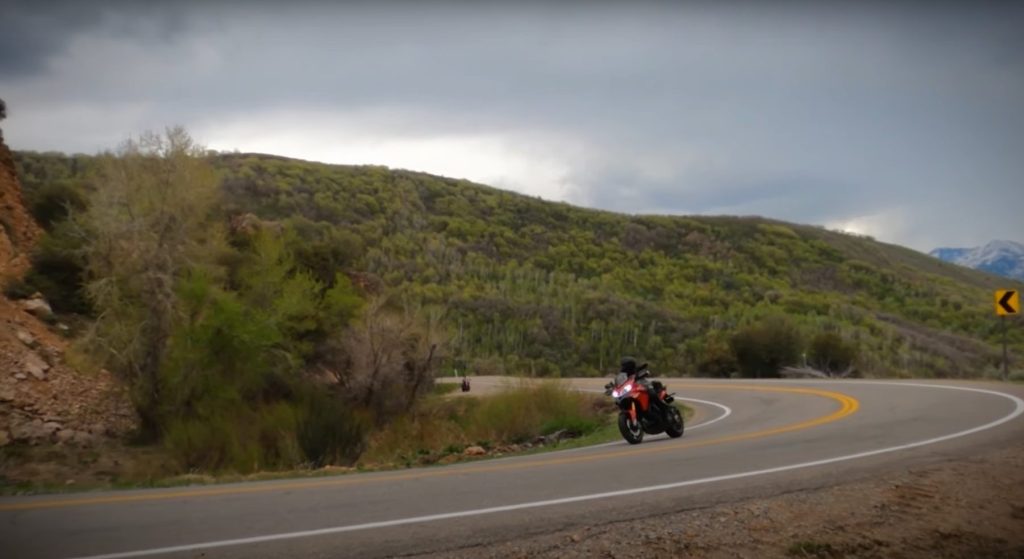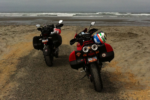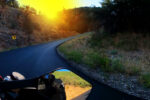I Was Wrong
What I learned from Champ U
One of the frustrations with what I try to do is some people criticize or dismiss a life saving technique, saying it’s not applicable to them because it’s a “race track technique” What if I told you, that by implementing some race-track techniques, you could keep riding the exact same speed you are riding now, but with less risk.
If you are anywhere on the internet, facebook, reddit, instagram, you have probably seen clips from the Yamaha Champions Riding School promoting their new online riding program, Champ U.
Now, I’ve long been a supporter of the Yamaha Champions Riding School, and in case you are not familiar with the program, the Yamaha Champions Riding School evolved from the Freddy Spencer Riding School, and is helmed by Nick Ienetsch, a very accomplished racer in his own right, but also a long-time moto-journalist, which makes him extremely knowledgeable as a rider but also just as good at distilling complex concepts down into concise, understandable language. Now I was really fortunate because the Yamaha Champ School was born at my home track here in Utah, which is how I first became familiar with the program. But one of the things that drew me to it in the first place is their data driven approach to instruction.

They look at what the best racers in the world are doing and integrate those techniques into the school. Techniques that allow the best riders in the world to navigate corners at unimaginable speeds, for us mere mortals, those techniques can absolutely be applied to a street rider going a fraction of that pace.

Listen, I can attest, as someone who spends a lot of time on tracks, but my true love is chasing down every canyon between here and there, race track techniques absolutely work to reduce risk and enhance the control we have over our bikes no matter if it’s diving into the corkscrew at laguna seca, or the ugliest and tightest decreasing-radius gravel-strewn downhill ess turn somewhere deep in the backwoods of Oregon. The same techniques work exactly the same in both places. And this is a big reason why I have long been a supporter of the Yamaha Champions program.
Now, normally, the cost to attend a two-day Champ Shcool school is around $2 thousand dollars, and is only taught in a few locations around the country. It’s completely understandable how their instruction is out of reach for so many riders. Not to mention, so many riders tend to mistakenly think a track school doesn’t apply to them as a street rider.
So, during the COVID pandemic when the world shut down, The Yamaha Champ School apparently got busy addressing both of those concerns and developed an online program called Champ U, and last I looked it was less than $100.
I wanted to know what this more accessible online program had to offer, so with my own money, I bought myself a pass, and proceeded to work my way through the online Champ U program.
So, what did I think of the program? Did I learn anything? Do I think you should give it a go? Well, not to give it all away. It was better than I thought it was going to be and yes, yes you should sign up. No matter if you are a nugget who just bought your first 390 Duke just getting your motorcycle legs underneath you or an old grey-beard salty-dog with 100,000 miles on your current Road King. Champ U is well worth it.

Mental Approach
To start things off, they quantified things that I hadn’t really thought of as a thing. So here’s an example of what I’m talking about. The school is broken down into, I think, thirteen different topic areas. And the very first topic of discussion is called “Mental Approach.” They started talking about having a mantra that you say to yourself when you ride,
And I’m thinking, thats silly, I don’t have a mantra. I’m not so sure about this… And then I went for a ride and it dawned on me. Not only do I have a mantra. I have a dozen or more different mantra’s I use depending on what I’m struggling with or what I’m working on. Wait for the Weight. See Everything, Look at Nothing. Don’t Surprise the Tire. Let the Corner Come to You…

So, uhm, yeah…. Right off the bat, I was wrong and the program was helping me quantify some of my own riding techniques. So, I’ll just go over here and eat my slice of humble pie…
Rote
Years ago a student came up to me and asked “how do I go through corner _whatever_” and someone standing near me jumped in and said, “you need to be in third gear, brake to the second corner marker, apex it early and go W.F.O. just before you touch the third red rumble strip”. And I was like, whoah, whoah, whoah… Lets talk about this corner for a moment. Describe this corner to me. Is it uphill or downhill? How are you entering it? Is there traffic? – I was kinda’ frustrated with the helpful bystanders advice because it was very pedantic and very specific.
Riding corners is like real-time problem solving with a thousand different variables ranging from our own skill, our tire condition, speed, temperature, surface condition, our entrance point, etc. Instruction should give us tools to help us solve those problems on our own when there aren’t braking markers and apex cones and giant X’s taped on the ground to tell us when to perform different operations, and I think this is where Champ U just shines!

They are not teaching, in their own words; Rote sequences. They are giving us tools to help us put the motorcycle where we want it and how to make corrections, and guys, this is something I’ve always believed down to my very core. Teach in a way that the student learns how to continue to coach themselves, how to analyze their own performance and how to make corrections, how to make the best decisions, and in the case of motorcycles, how to reduce the risk and have more fun!
Trail Braking
So, on one hand, I walked away from Champ U thinking “heh, great minds think alike – we’re saying a lot of the same stuff, even if phrased or presented differently” But also, they said a lot of things better than I have. Here’s another example. Taking the Champ U made me realize that I may have been explaining something to you guys in not quite the best way. If you’ve watched my video’s I often say “Ideally, you should slow until you can see your exit” – and after going through Champ You, I think that phrasing may have done you guys a disservice. It wasn’t as clear as I think I thought it was. …as clear as I thought I think… As clear as it could have been.
I think using the word “ideally” may have implied the wrong thing. When I was using that phrase, I was thinking about a race track environment, you know, ideal conditions, where we are trying to slow until the point where we can get back onto the gas, finding and respecting the slowest part of the corner… but, and here’s where I think I could have been better… How many ideal corners do we see, especially on the street? I’m afraid that my gravitation to “ideal” didn’t give permission to use maintenance throttle in those situations where we are comfortable with our speed and our direction, in those corners where we may not need to continue slowing down, but can’t quite see our exit yet.

Where Champ U did it better is they make it very clear that maintenance throttle can often be a very important part of a corner, especially those long sweeping corners. Honestly I go to maintenance throttle mid corner all the time. Hell, I even go back to the brakes mid corner if I need to.
So I hope you guys don’t judge me too harshly for this. I’ve always said that if a new and better way comes along, I’m not going to get too attached to the old way and I’ll adapt. I try really hard to research and come up with what I believe is the better way, and the way Champ U described trail braking was better. It’s more flexible while not taking away options for dealing with the unexpected.
Should You Sign Up?
I don’t want to go into too much detail about each of their topic areas because I sincerely believe it really is in your best interest to take the course, it’s really extremely cheap for what you get out of it.
But one thing I do want to say is if you decide to sign up and I hope you do… so, when you sign up… don’t rush through it. There are thirteen topic areas, each with several videos, 40 video’s I think. Each topic area has exercises that you can work on in your garage and on your next ride. It took me a couple weeks to go through the online program because I really wanted to digest and process the information before moving on to the next topic.

Look guys, I gotta’ tell ya’, and I feel I need to stress this, I’m not getting paid for this. There’s no coupon code that credits me and no money comes my way if you sign up. Making these video’s isn’t my full-time job. I do this because I love this sport and it was so hard for me as a newer rider to find credible and quality information to help me become a better, faster and safer rider. In all honesty, this program is exceptional! I keep thinking; what I would have done to have access to this content years ago!! So yeah, I think all y’all should sign up. It’s really, really good!







Hi Dave.
First of all congrats for being humble assuming your mistake.
I get a LOT of good input from your technics and advice.
There are a lot of different opinions on riding technics. I personally take them, sum up, analyze and then try on my riding. Sometimes I find it best to use a mix of different opinions. But definitely your advice has been great for my riding. For instances, I never tried trail braking before hearing from you. It´s great, although I tend to use more or less times, and for more or less time in the turn, depending on different factors, such as riding mood, type of turn, familiar or unfamiliar roads, etc.
Keep up with your work, because its ‘very valuable.
Safe riding.